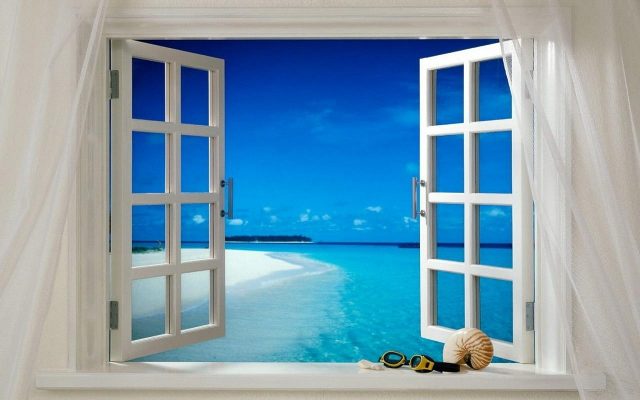Sufficient ventilation is crucial for creating and maintaining a healthy indoor climate. In the past, natural air infiltration was a major contributing factor to the healthy air exchanges in a house. Depending upon wind strength, three or more air changes per hour can be observed in older homes. Although these older homes have sufficient air exchange for health they are often drafty and uncomfortable to live in without a higher energy consumption. In the average home built since the energy crisis of the 1970s, one to two air changes are commonly found; whereas in modern tightly built homes, sealed so as to maximize low-energy-consumption and efficiency, the air changes per hour can be as low as one-tenth (0.1ACH). This is not enough air exchange to maintain health a proper whole-house ventilation strategy becomes very important.
Whole house ventilation in a natural and healthy home can be accomplished largely through non-mechanical means in moderate climates by understanding how the building will interact with the surrounding climate and using stack effect, cross ventilation, proper window placement etc. A standard rule of thumb states that one cubic foot of exhaled carbon dioxide (CO2) requires about 80 cubic feet of fresh air. Occupants with a higher activity level easily require double the amount of fresh air. In rooms where there are pollutants or excess moisture generated, such as bathrooms, hobby rooms, kitchens or rooms with open fireplaces, the required amount of fresh air may be several times higher. Fresh air requirements for urban outdoor air can be twice as high as those for outdoor air in the countryside.
The less often windows are opened and the tighter a house is sealed, the more mechanical ventilation becomes necessary. Differences in outside temperature and wind pressure are the natural forces that promote air exchange. In order to minimize the heat loss associated with ventilation, controlled ventilation systems with heat recovery are promoted and subsidized now. However, if they are not properly sized, installed and maintained, such measures can actually pose a health risk. For that reason, it is important to to have knowledge about proper equipment choice, installation and operation of these units. In building biology we strive to reduce the need for mechanically produced air exchange through proper design and owner education and then to make health conscious choices about mechanical ventilation where required.
Note: In Building Biology, exterior walls, ceilings and roofs are regarded as a “third skin” that is often referred to as a “breathable.” This term refers to the free flow of water vapor through walls that have the capacity to handle this moisture and then dry out naturally. The term may be confusing and it is important to note that this does not refer to air exchange through the wall. Wall systems whether natural or conventional should be air tight and air exchange should primarily be via passive ventilation through intentional openings such as windows and doors or through mechanical ventilation.
Want to learn more on this issue? Click the comprehensive online course, here below.


